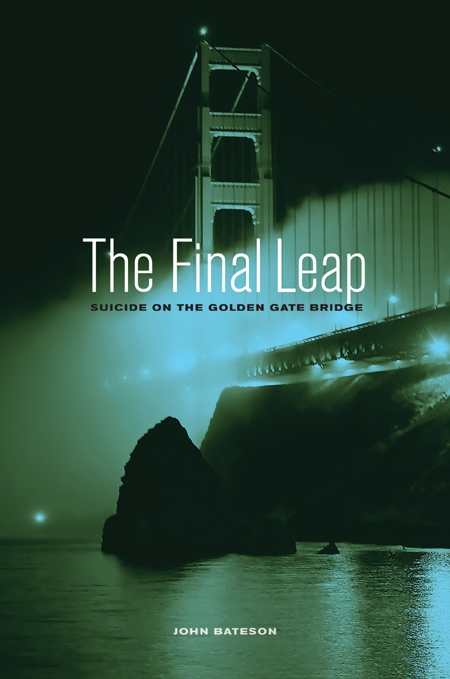The Final Leap
Suicide on the Golden Gate Bridge
Iconic and soaring, the Golden Gate Bridge in San Francisco holds a dark distinction as the world’s top site for suicide. Since it opened in 1937, there have been more than fifteen hundred reported deaths, and John Bateson believes that the number is actually closer to two thousand. Sadly, the statistic keeps growing.
Bateson works as Executive Director of the Contra Costa Crisis Center, an organization that focuses strongly on suicide prevention. He’s seen firsthand the effects on families and friends that suicide can bring, and he’s a ferocious advocate of building a suicide-prevention barrier on the bridge, a measure that’s long been debated but never enacted.
In this stellar exploration of Golden Gate Bridge suicides—the first book ever written on the topic—Bateson weaves together multiple stories and themes, creating a striking history of the issue. He begins with a description of Casey Brooks, a seventeen-year-old who took her life by jumping from the bridge in 2008. In telling her story, Bateson notes how easy it is for anyone to hop over the railing, which is only four feet high, and stand on the girders.
Since the structure has one of the highest pedestrian walkways of any bridge in the world, death is virtually guaranteed, and only a couple dozen jumpers have survived the leap long enough to describe the experience. Bateson’s call for a barrier is interwoven throughout the work, but as he details more stories like Casey’s, the persistent advocacy doesn’t seem misplaced.
He writes, “[This book is] intended to educate readers about Golden Gate Bridge suicides with the hope that more people will realize that this deplorable situation must be remedied at once, without further delay. And it can be.” He provides a comprehensive history of barrier proposals, with opponents always citing cost and aesthetics as reasons to keep the bridge as it is.
Bateson’s work will resonate deeply with anyone who has lost a loved one to suicide. With sensitivity and compassion, he discusses the effects of suicide on rescue workers, the local coroner, and crisis counselors. By including the perspectives of a half dozen suicide survivors, he reveals that every one of them regretted the decision the moment they stepped from the bridge.
Most of all, Bateson attempts to tell the stories of the suicide victims themselves, trying to trace what led them to the act and how they could have chosen differently. His work is a combination of manifesto and memorial, providing both a tribute to those who’ve jumped and a starting point for those who want to prevent more suicides from the Golden Gate Bridge.
Reviewed by
Elizabeth Millard
Disclosure: This article is not an endorsement, but a review. The publisher of this book provided free copies of the book to have their book reviewed by a professional reviewer. No fee was paid by the publisher for this review. Foreword Reviews only recommends books that we love. Foreword Magazine, Inc. is disclosing this in accordance with the Federal Trade Commission’s 16 CFR, Part 255.

